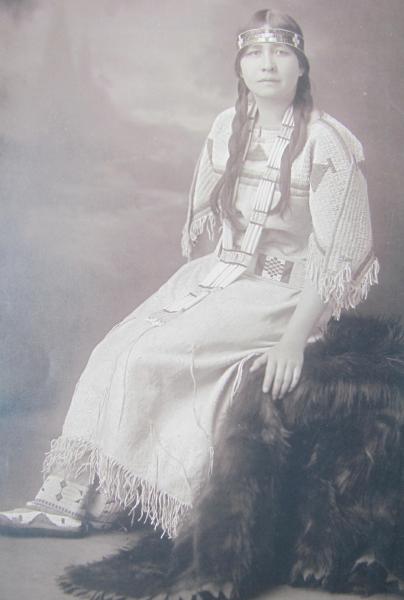- Ella Cara Deloria
- Ella Cara Deloria
Contributed to
-
Game of ball (1887)
A game only played by women and wíŋkte, wherein they would sit and slide marbles over ice to score, and their opponent would use a stick to hit the marbles away. They played until all of their prizes were gone.
-
Goose and her children, a game (1887)
In summer boys would play a game where one was a hunter and all others were geese. The geese could swim and dive and go ashore while the hunter tried to catch them. When boys were caught they were asked how many children they had and then were dunked.
-
Playing with small things, a game (1887)
"Little play" is a game of make-believe where girls create toys such as tipis, cribs, and more. It is a game of being grown up, having children, and being married. They learn from their mothers and Elders and develop life skills through their playing.
-
Throwing chewed leaves in the eyes, a game (1887)
Boys would chew up leaves, plants, and deer sinew until it was wet and sticky. Then they would chase each other, often playing on teams, and try to get the paste in their opponents' eyes.
-
About the wíŋkte (1887)
Wíŋkte are considered very witty, shameless, and unafraid. They had a tradition of nicknaming people in ways that were funny, inappropriate, and/or mocking. Includes stories of a famous wíŋkte by the name of Wičhíte-Waštéla.
Mentions in the recordings
-
Ella Deloria Y.W.C.A. Uŋ Oíhdaka
Ella Deloria talks of her work with the Y.W.C.A.
in
-
Miss Deloria All Saints School, Sioux Falls, én thokáheya wayáwa nakúŋ Oberlin College, Ohio, hehán Colombia University, New York, etáŋhaŋ wóuŋspe ihúŋnikiye.
Miss Deloria went to school at All Saints in Sioux Falls, and is a graduate of Oblerin College, Ohio, and Columbia University in New York.
in
-
Kʼa Miss Deloria táku thokáheya čhažéyate čiŋ hé wikhóške ičháǧapi hená hékta khúŋšitkupi thawíčhoȟʼaŋpi, wóuŋspe, oíhduhe kʼa wíyukčaŋpi kiŋ kičhí íčhithokeča oyáka.
The first thing Miss Deloria mentions is that she is talking about today's young woman, whose generation differs from their grandmothers' in work, education, behavior, and beliefs.
in

